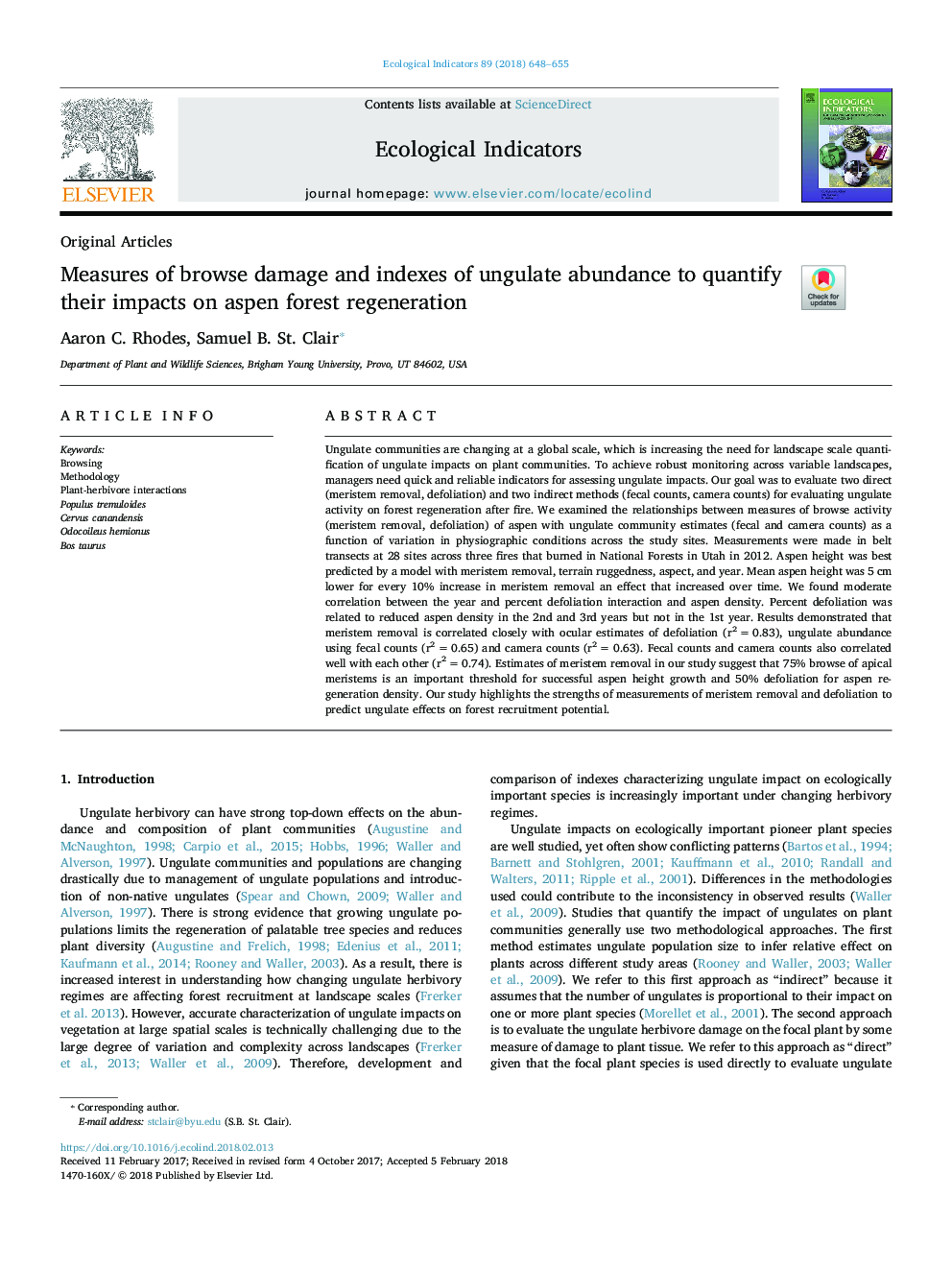| کد مقاله | کد نشریه | سال انتشار | مقاله انگلیسی | نسخه تمام متن |
|---|---|---|---|---|
| 8845518 | 1617113 | 2018 | 8 صفحه PDF | دانلود رایگان |
عنوان انگلیسی مقاله ISI
Measures of browse damage and indexes of ungulate abundance to quantify their impacts on aspen forest regeneration
ترجمه فارسی عنوان
اقدامات فهرست آسیب و شاخص های فراوانی گوجه فرنگی برای اندازه گیری تاثیرات آنها بر احیای جنگل آسپن
دانلود مقاله + سفارش ترجمه
دانلود مقاله ISI انگلیسی
رایگان برای ایرانیان
کلمات کلیدی
موضوعات مرتبط
علوم زیستی و بیوفناوری
علوم کشاورزی و بیولوژیک
بوم شناسی، تکامل، رفتار و سامانه شناسی
چکیده انگلیسی
Ungulate communities are changing at a global scale, which is increasing the need for landscape scale quantification of ungulate impacts on plant communities. To achieve robust monitoring across variable landscapes, managers need quick and reliable indicators for assessing ungulate impacts. Our goal was to evaluate two direct (meristem removal, defoliation) and two indirect methods (fecal counts, camera counts) for evaluating ungulate activity on forest regeneration after fire. We examined the relationships between measures of browse activity (meristem removal, defoliation) of aspen with ungulate community estimates (fecal and camera counts) as a function of variation in physiographic conditions across the study sites. Measurements were made in belt transects at 28 sites across three fires that burned in National Forests in Utah in 2012. Aspen height was best predicted by a model with meristem removal, terrain ruggedness, aspect, and year. Mean aspen height was 5â¯cm lower for every 10% increase in meristem removal an effect that increased over time. We found moderate correlation between the year and percent defoliation interaction and aspen density. Percent defoliation was related to reduced aspen density in the 2nd and 3rd years but not in the 1st year. Results demonstrated that meristem removal is correlated closely with ocular estimates of defoliation (r2â¯=â¯0.83), ungulate abundance using fecal counts (r2â¯=â¯0.65) and camera counts (r2â¯=â¯0.63). Fecal counts and camera counts also correlated well with each other (r2â¯=â¯0.74). Estimates of meristem removal in our study suggest that 75% browse of apical meristems is an important threshold for successful aspen height growth and 50% defoliation for aspen regeneration density. Our study highlights the strengths of measurements of meristem removal and defoliation to predict ungulate effects on forest recruitment potential.
ناشر
Database: Elsevier - ScienceDirect (ساینس دایرکت)
Journal: Ecological Indicators - Volume 89, June 2018, Pages 648-655
Journal: Ecological Indicators - Volume 89, June 2018, Pages 648-655
نویسندگان
Aaron C. Rhodes, Samuel B. St. Clair,
